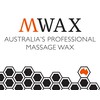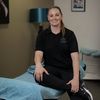
Acupuncture points are located all over the body including the scalp and the ear. Point selection may be local to your condition and may also include points elsewhere on the body. Rebecca also works with children and is able to adapt treatment to suit the child whether it be needles or needle free (Shonishin).
Acupuncture is part of Traditional Chinese Medicine which also incorporates TuiNa (massage), herbs, diet, exercise and more. Chinese herbal medicine is one aspect of Traditional Chinese Medicine using herbal medicine to assist the patient. Oncology Massage is delivered by specifically trained therapists who will work with your needs.
Acupuncture is part of Traditional Chinese Medicine which also incorporates TuiNa (massage), herbs, diet, exercise and more. Chinese herbal medicine is one aspect of Traditional Chinese Medicine using herbal medicine to assist the patient. Oncology Massage is delivered by specifically trained therapists who will work with your needs.
Services
Rebecca studied a Bachelor of Health Science in Acupuncture at the University of Technology in Sydney graduating in 2002. She also holds a Diploma in Remedial Massage. Rebecca is a registered acupuncturist with AHPRA and a member of the AACMA. Scalp acupuncture is a younger version of acupuncture with only 60 years of history.
Closely related to acupuncture, the practice of Chinese massage focuses on energy points or chi points in the body. These are locations all around the body that have been pinpointed by Chinese medicine Canberra therapists known to be key stress points. By using the Chinese massage Canberra methods that have been in use for generations, massage therapists can reinvigorate their clients, get rid of stress and help them feel remarkably better.
Pain is the most common symptom presenting at Queanbeyan Acupuncture. Pain may be associated with migraine, headache, hayfever and sinus issues. Pain may also be experienced during menstruation, with bloating and constipation, arthritis and even with sporting injuries such as sprains and strains. Pain can be both acute and chronic (short and long term) and may be managed with acupuncture.
For parents looking for acupressure to use during the birthing process, my colleague Dr Debra Betts has a lovely video you can download for a small fee on the google play store. Debra is a trained acupuncturist and midwife in New Zealand. Her explanation of points is very easy to follow and may allow partners to feel of some assistance during the birthing process.
How does it work? Cupping works by using a flame to draw the oxygen out of the interior of the cup and then placing this on the body creating a vacuum effect. This draws the smaller blood vessels up with the tissue which can then leave bruising. It can be uncomfortable whilst the cups are in situ and there is a small risk of skin infection and burning.


